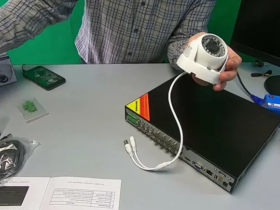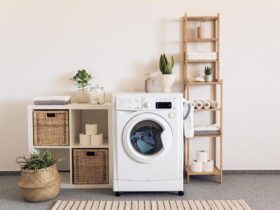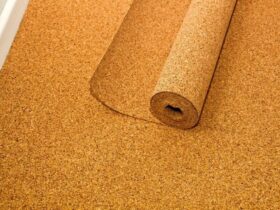If there is a task to develop a chicken of the highest quality, then broilers that come from a farm to a meat processing plant should also be the best. If the farmer saves on the content of the bird, then the quality of the final product on the counter will also never be appropriate.
So, if a chicken, the quality of which is below a certain level, it must be rejected and in some extreme cases it is generally destroyed. And entrepreneurs should figure out at what stage technological gaps were allowed and eliminate them.
If the technological process is not established, production costs are growing, and the profit is reduced.
Influence of conditions in the chicken coop on production
One of the most important challenges for people engaged in breeding birds is the need to take into account all factors that can harm the bird, and minimize their influence.
The quality of the final product directly depends on the gender on which chickens grow. Quite often, the owners do not pay attention to this, while the key to the health of the bird, at least at the initial stages, depends on 80% on this. In modern households, which are really made so that the livestock has the best conditions of detention, the floor should be made of concrete. The absorbent of natural materials is creeping on this base: straw, sawdust and the like. The absorbent layer should be at least 5-10 cm.
If the floor is too thin, this can lead to injury to chickens. Therefore, floor inspection should be carried out in daily mode. The examination must be taken into account the consistency of the floor, its humidity. If the floor is already wet, then it will be difficult to dry it. A number of factors that contribute to increased floor humidity:
flow of water from drinkers with improper condition or obsolescence;
poor absorption of poultry bowels through the consistency or material of the floor itself;
Poor ventilation or inappropriate level of insulation. Often, experts forget that cold air spreads quickly, so the humidity in the room is very difficult to overcome;
The difference in lighting intensity. In places with the best lighting, the floor quality will suffer more. This is because the bird is more active there, so the number of bowel movements and feces are slightly larger, so the floor quickly becomes wet and deteriorates;
If the poultry diet contains a large amount of salt or minerals, then it drinks more water, so the floor becomes wet faster;
If the bird suffers from any type of diarrhea, then the amount of feces with a large number of uric acids and ammonium will increase accordingly.
In addition, it should be borne in mind that the floor of poor quality can injure the number and lead to infectious diseases of the limbs due to pollution.
Limbal damage
Problems with limbs can appear in the form of hardens and dermatitis for the second week of bird content. Typically, at this stage, such manifestations are not critical, but they become more noticeable when the bird begins to grow rapidly. Starting from the fourth-fifth week, when the paws should withstand more and more severity of each day, the pressure of the floor on them increases. If the limbs are in poor condition, the diseases are inevitable. For example, the chicken begins to poorly consume food, which leads to a lag in growth and development. These two aspects are very important if the farmer has the goal of growing a healthy number.
Damage to the sternum
The thoracic part of the bird traditionally has the greatest cost. It can have a partial defeat of the cover or continuous redness. These two problems occur often, since in some places the chicken plumage can be thinner, so the skin of the sternum is damaged more. Such damage directly affects the growth and development of chicken: the number of livestock consumes food worse and requires more time to rest.
The effect of planting density
The most common problems of the integrity of the skin in chicken are deep cuts and scratches that heal for a very long time and hide them in fact unrealistic. The cause of such damage, as a rule, is a high planting density in the house and the mismatch of the room with the needs of the content. If there are a lot of birds in the house, experts recommend making from 8 to 12 sections 12 x 12 meters each or carefully monitor that overpopulation in the house is not. Some of them recommend that the birds in the room are at least 2% less than the designed density.
It is worth making sure that the feeders in the rooms are located evenly over the entire area of the house, so that all the birds without exception have access to them. In addition, experts who are responsible for examining the poultry houses and removing dead individuals must move slowly so as not to scare the bird. A frightened bird begins to beat intensely, injuring not only itself, but also neighboring individuals. In general, it is necessary to minimize the presence of a person in households, because this increases the level of stress. The bird becomes especially shy during feeding.
Comfortable climate
It should be remembered that the livestock should be kept in households during the period of growth and fattening with the maximum possible comfort, which, in particular, applies to the temperature regime. It is proved that the optimum temperature in the house is 22-26 ° C and the relative humidity of 60%. In addition, air flows should be distributed evenly to prevent the cluster of the bird in the same territory. It often happens that the staff of the poultry farm simply does not know about these aspects of the content: no one is following the temperature, and certainly no one pays attention to what temperature during the poultry is, its transportation in the cells to the destination. But special mobile coolers would be appropriate. At the same time, such “hamples” should be placed above the bird, because it is very dangerous to direct air flows around the neck and comb. If the air temperature is high and the poultry is cooling in the house, this can lead to heat stress and high mortality rate.
Following the condition of the poultry house and the livestock at all stages, from initial care and feeding, you must definitely work on acceptable conditions for it. This is what will become undeniable advantages for a poultry enterprise and protect it from loss of quality and finance.













Оставить коммент.